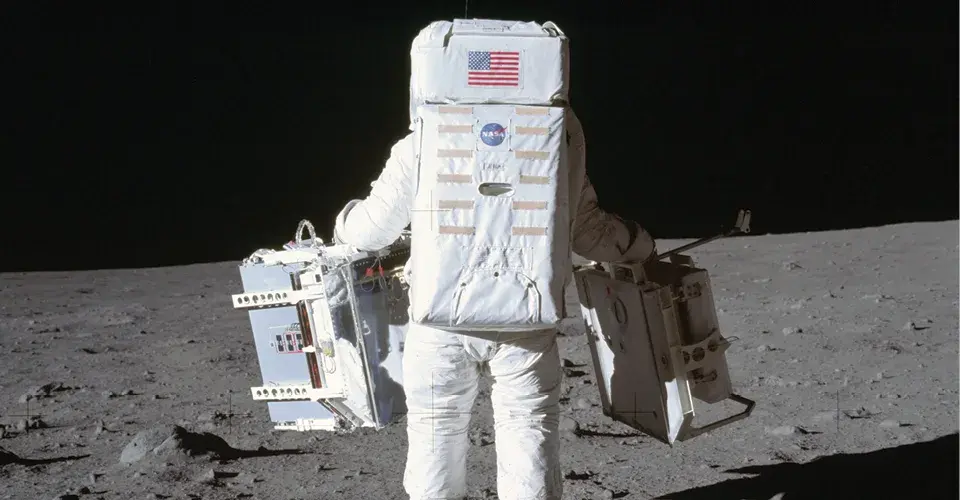Mirrors on the Moon
50 Years After Apollo 11 Landing, UMD Experiment Continues to Provide Physics Answers
by Liam Farrell | Photo courtesy of NASAAlong with Neil Armstrong and Buzz Aldrin, University of Maryland scientists left a lasting mark on the moon when Apollo 11 landed there 50 years ago in July, one that is still imprinting on the world of physics.
That’s because a piece of equipment the astronauts left behind—a small panel of 100 mirrors designed by UMD physicists Doug Currie, the late Carroll Alley and a national team—remains in use for experiments.
The lunar laser ranging array, which works in tandem with two others placed by the Apollo 14 and 15 missions in 1971, is a target for lasers beamed from telescopes on Earth. The bounce back from those pulses enables precise measurements of distance that in the past five decades have led to discoveries ranging from the moon’s liquid core to confirming that Earth’s continents are still (slowly) moving.
In fact, the arrays are responsible for “really the only verification” of some aspects of Einstein’s general theory of relativity, says Currie, now a professor emeritus at UMD.
“Science has come out of it remarkably,” he says.
And there’s plenty more to learn. Currie has been working with the National Laboratories of Frascati, Italy, and commercial space company Moon Express to get a new generation of arrays onto the moon. With measurements exponentially more accurate, he hopes the new instruments shed light on mysteries like dark energy and dark matter.
“The gain we will have with the next generation is significant,” Currie says. “It allows us to chase in the direction of some of the fundamental questions of physics.”
0 Comments
Leave a Reply
* indicates a required field

